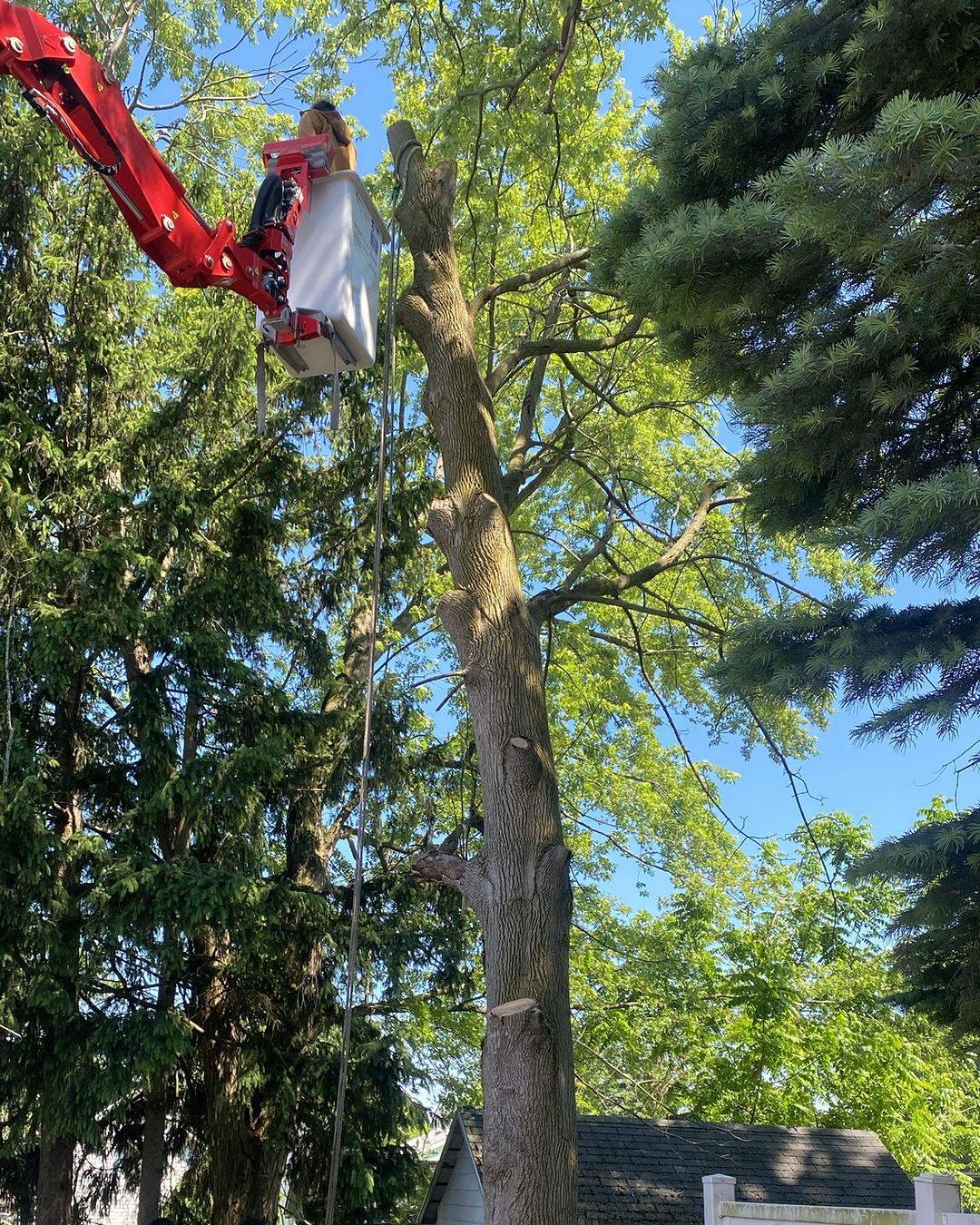Want to know how to remove a tree safely? This guide is for you! Dead, damaged, or diseased trees can be an eye sore and pose a danger. It can threaten your home, power lines, and even the safety of those you love. But undertaking tree removal yourself can be dangerous and overwhelming.
Consider hiring an experienced and certified tree arborist Camillus, to ensure a safe and stress-free removal. But if you consider this as a DIY project, we have detailed the steps for you.
What to Do Before You Decide to Remove the Tree Yourself
Appraise the environment of the tree; plan where it is going to fall even before cutting the first piece of wood. The wrong cut might bring serious injury and property damage; remove obstructions from the space and ensure that the path in which the tree is going to fall safely.
Wear the Right Safety Apparatus
Tree removal requires specific equipment and personal protective wear. Some of these include wearing gloves, a helmet, eye protection, ear protection, and even a hard hat. Ensure your chainsaw is also serviced prior to the task.
Safety Zone Even though it’s not always required, defining a safety zone around the tree will secure bystanders and property. Limit entry within this zone when working to avoid accidents.
Although these precautions are useful, the best alternative is to hire a seasoned arborist from Camillus. A professional will do the job both efficiently and safely.
Steps To Remove Your Dead and Diseased Tree
Here are some steps to follow if you still want to remove a damaged, dead or diseased tree.
Step 1
Start by locating the branches that look infected and diseased or show any other signs of infection. First, make an undercut up to the halfway point of the branch of the tree The cut shouldn’t be more than the depth of the teeth of your teeth.
Step 2
Next, saw through the top branch and make an undercut that matches the initial one. This step is designed to remove some of the weight from the branch, without causing it to split or peel. It is important to do this with species that have thin bark.
Step 3
Continue this with the other infected branches to the branch collar – and make an undercut again.
Step 4
Again, meet the overcut with an undercut. Ensure that the cuts are precise and clean against the collar of the branch.
Step 5
The aim of the above steps is just to take off the extra weight before cutting down the tree. Now, you are going to aim for the main trunk.
In tree cutting, there are two types of cuts: The first one is the notch cut. This involves removing a wedge on the side of the tree where you would like the tree to fall. The second cut is the back cut – this is where you make a horizontal back cut on the other side.
When it’s time to chop down the tree, you need to position yourself and your saw. Stand with your left shoulder touching the trunk, and use the saw or the axe to cut the tree at a 70-degree angle in the direction that you wish it to fall.
Reduce the diameter of the tree by about one-quarter.
Next, you will need to make a horizontal backcut. This is done by turning the saw or axe through its opposite side. When you only have one hinge remaining, stop. The hinge size should be about one-tenth of the diameter.
Don’t cut through the entire tree because you’ll lose control over when and where the tree falls.
Step 5
Once you’ve cut down the tree, the following step is to remove the stump and the root system. Dig out the stump with a shovel and reveal the roots.. Hire a tree arborist Camillus, to take care of the stump and decide whether you should go for grinding or straight removal. They can also help you get rid of the tree debris Camillus, or you can use them as mulch.
Step 6
After completing the project, make sure you sanitize the tools. This is to make sure that the disease doesn’t pass on to the next project.
Conclusion
Don’t let a dead, diseased, or damaged tree become a looming worry. Take control and make sure your property and family are safe. Contact tree specialist Camillus and book your consultation today!
Get in touch with KD Tree and get your diseased and damaged tree removed by certified tree arborist Camillus. We possess the expertise, equipment, and safety protocols to handle any tree removal challenge.
What are you waiting for? Get in touch today!
Read also- 8 Native Trees To Plant In Your Baldwinsville Property
